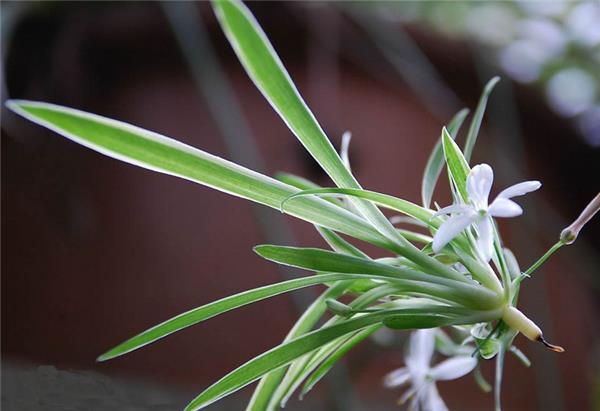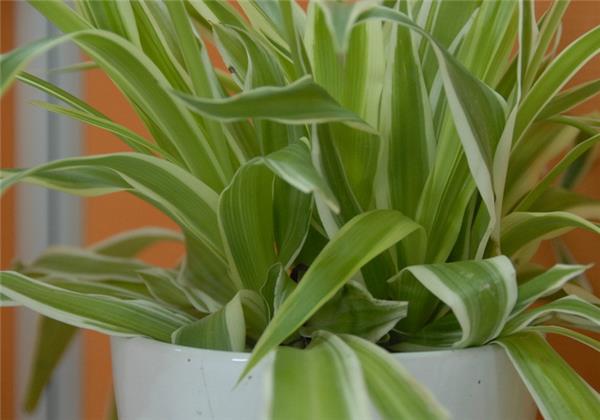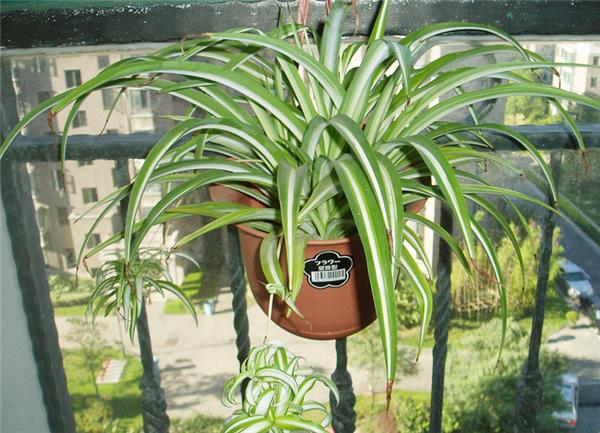Causes and treatment methods of yellow leaves of Cymbidium chinensis
Cymbidium is a kind of indoor foliage plant that is very easy to raise, and it is also a common plant in our life, but sometimes we will find that the leaves of Cymbidium are yellow. today we will explain the reasons and treatment methods for the yellow leaves of Cymbidium.

Causes and treatment methods of yellow leaves of Cymbidium chinensis
1. Improper fertilization: excessive fertilization causes yellowing of leaves, which exceeds the needs of the plant. At first, the leaves are bright and uneven, and then the roots rot, and the leaves are yellow.
Treatment method: should stop fertilizing, irrigate more water, or turn the pot to clean the root and replace the new soil.
2. Nutrient loss: all kinds of nutrient elements in the basin soil have been exhausted, the three elements of nitrogen, phosphorus and potassium have not been replenished in time, the plant is lack of nutrients, and the leaves are yellow and thin.
Treatment method: fertile loam and fertile water should be replaced in time.

3, lack of sunlight: although the orchid is a semi-negative flower, it should see more than four hours of astigmatism at least every day, otherwise the chlorophyll will decrease and the leaves will turn yellow.
Treatment: should set aside free time every day to put the orchid in the sun for a few hours, but not too much exposure to the sun.
4. poor air permeability and water permeability of basin soil: stagnant water in basin soil does not dry for a long time, root respiration is difficult, which leads to leaf yellowing.
Treatment method: loosen the soil and control moisture in time. Fifth, it is impervious to water for a long time. The roots of Cymbidium lose water, and the lower old leaves turn yellow. It should be watered thoroughly to keep the basin soil warm and moist.

Next, let's take a look at the maintenance methods of hanging orchids.
1, change the soil and change the basin: the basin hangs the orchid. In order to have luxuriant stems and leaves, the soil should be changed and the basin should be changed once in March every year. If the basin is deeper and the base fertilizer is more sufficient, the basin can be changed once every two years. When turning the basin, knock the plant out of the basin, cut off the withered roots and excess roots, replace it with a new humus-rich culture soil, and then apply livestock hoof horns or rotten cake fertilizer as base fertilizer. After planting, put the seedlings in a warm and semi-overcast place. The optimum growth temperature of Cymbidium is about 25 ℃. After the plant returns to robust growth, hang the flowerpot under the eaves of the corridor or in an appropriate position in the room. The general height is not to meet, and should pay attention to ventilation.
2. Watering: the hanging orchid likes the humid environment, and the basin soil is easy to keep wet. However, the hanging fleshy root can store a lot of water, so it has a strong ability to resist drought, and it will not dry to death without watering for several days. Below 5 degrees in winter, less watering, basin soil should not be too wet, otherwise the leaves are easy to yellowing.
3. Fertilization: liquid fertilizer is applied every two weeks in the growing season. Flower and leaf varieties should apply less nitrogen fertilizer, otherwise the white or yellow markings on the leaves will become less obvious. Stop fertilizing when the ambient temperature is below 4 degrees.

4. Diseases and insect pests: there are few diseases and insect pests in Cymbidium, mainly physiological ☆ banning ☆ disease, leaf tip yellowing, so fertilizer and water management should be strengthened. Check regularly and wipe off the shell insects and whitefly on the leaves in time. Cymbidium is not easy to suffer from diseases and insect pests, but if the basin soil is stagnant and poorly ventilated, it will not only lead to rotting roots, but also may cause root rot, so attention should be paid to spray control.
5. Lighting: hanging orchid likes semi-overcast environment and can be cultivated in bright indoor all the year round. Cymbidium cultivated outdoors can also grow well in strong direct sunlight in summer. However, hanging orchids cultivated indoors should avoid strong direct sunlight and cover 50% to 70% of the sun.
6. Pruning: cut off the yellow leaves at any time. The basin can be turned once a year in March to cut off the old root, rotten root and excess fibrous root. Cutting off some of the old leaves of Cymbidium in the first and middle of May will promote the germination of more new leaves and small orchids.
Related
- Wuhan Hospital Iron Tree Blooming Result Was Instantly Frightened by the Gardener Master
- Which variety of camellia is the most fragrant and best? Which one do you like best?
- What is the small blue coat, the breeding methods and matters needing attention of the succulent plant
- Dormancy time and maintenance management of succulent plants during dormancy
- Minas succulent how to raise, Minas succulent plant pictures
- What are the varieties of winter succulent plants
- How to raise succulent plants in twelve rolls? let's take a look at some experience of breeding twelve rolls.
- Attention should be paid to water control for succulent plants during dormant period (winter and summer)
- Watering experience of twelve rolls of succulent plants
- Techniques for fertilizing succulent plants. An article will let you know how to fertilize succulent plants.



